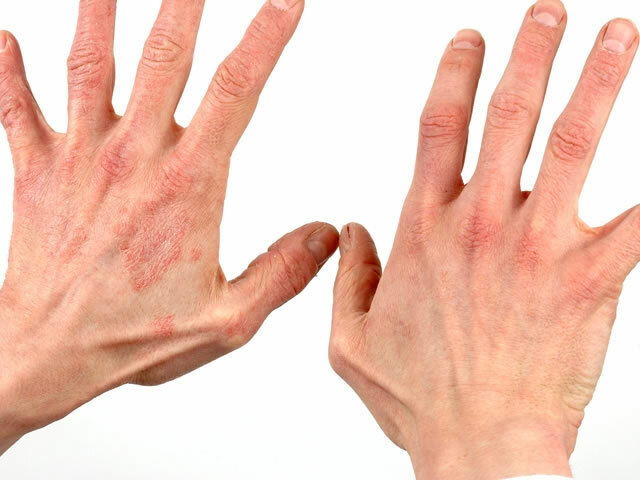Keloid scars: causes and treatment
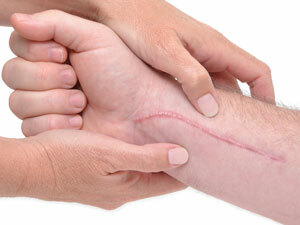 Scars called the formation of connective tissue that occur at the site of damage to body tissues.Scars - this is a physiological phenomenon, the result of healing of damaged tissues.With a normally proceeding healing process, scars on the skin after a while become almost invisible and do not cause any inconvenience to a person.
Scars called the formation of connective tissue that occur at the site of damage to body tissues.Scars - this is a physiological phenomenon, the result of healing of damaged tissues.With a normally proceeding healing process, scars on the skin after a while become almost invisible and do not cause any inconvenience to a person.
What is hypertrophic and keloid scars
With some individual features of the body, excessive proliferation of connective tissue during healing.As a result, hypertrophic or keloid scars occur.Keloid is a dense proliferation of connective tissue resembling a tumor.
The main differences between keloid scars from hypertrophic:
- The keloid scar is outside the wound, while the hypertrophic scar is just above its surface.
- Hypertrophic scar does not manifest itself, except for appearance, while in keloid patients often complain of pain, itch in the rumen, a feeling of tightening of the skin and paresthesia( a violation of sensitivity) in the wound area.
- Hypertrophic scars eventually regress - flatten, become pale, and the keloid scar hardly changes - its color remains crimson or cyanotic, as blood vessels grow into the keloid tissue.
- Differences at the microscopic level - in keloid scars 7-8 times more collagen than in hypertrophic.
So, it is possible to suspect a keloid scar on the following grounds: a rough, ugly scar having a color from pale pink to purple-cyanotic is formed on the wound site.This scar can pulsate and deliver an unpleasant sensation - pain, itching, decreased sensitivity of the skin.The keloid, in its shape, resembles a tumor and extends beyond the edges of the wound, while it rises high above its surface.

Causes of keloid scars
These scars can form even with the most minor skin lesions - scratches and scratches.
The reasons may be:
- incorrect matching of the edges of the wound;
- wound in infection with subsequent suppuration;
- excessive tension of the skin when applying sutures;
- hormonal imbalance;
- immunodeficiency;
- hereditary predisposition.
Who most often form keloid scars
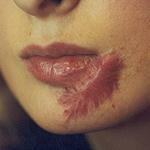 The tendency to keloid scars is noted in people aged 10-40 years.Old people and children are much less likely to develop keloids.This is explained by the maximum regenerative ability of the skin in adulthood.In children, the skin is more elastic and heals normally, and in older people atrophic scars are most often formed.
The tendency to keloid scars is noted in people aged 10-40 years.Old people and children are much less likely to develop keloids.This is explained by the maximum regenerative ability of the skin in adulthood.In children, the skin is more elastic and heals normally, and in older people atrophic scars are most often formed.
Scientists noted the dependence of localization of keloid scars depending on race.For example, white people have a tendency to form keloid scars on the face, upper limbs and chest, while in Asians on the chest keloid is extremely rare.In black people, keloids with a higher frequency are formed on the legs.These facts suggest a genetic predisposition to the formation of keloid scars.
Treatment of keloid scars
The main rule that should be followed when treating a keloid is the prevention of their appearance.
Patients prone to keloid scars should give up any cosmetic surgery.In operations performed for vital indications, the patient should inform the surgeon of his predisposition to keloids.In this case, the doctor will avoid excessive skin strain when closing the postoperative wounds.It is desirable that no incisions are made on the sternum and joint surfaces - in these places the probability of keloid occurrence is much higher.
There are several treatments for keloid scars combined into the following groups:
- pharmacological methods( use of corticosteroids and immunomodulators - drugs that affect the formation of collagen in the rumen);
- surgical methods aimed at excision of excess tissue( excision with a scalpel, laser and cryosurgery);
- occlusive methods - use of pressure bandages;
- physiotherapy methods - electrophoresis, magnetotherapy;
- Radiation therapy;
- correction of keloids with cosmetics.
Let us dwell in more detail on each of the methods.
Drugs for the treatment of keloid scars
The use of corticosteroids - intramuscular administration of hormonal drugs leads to a decrease in the synthesis of collagen, reduces the concentration of inflammatory substances.Most often use the introduction of triamcinolone acetate - two to three multiple injections with an interval of 1-2 months.Another option is the use of hormonal ointments.These methods can be accompanied by complications such as rumen atrophy, the appearance of telangiectasias( vascular asterisks) and changes in pigmentation.
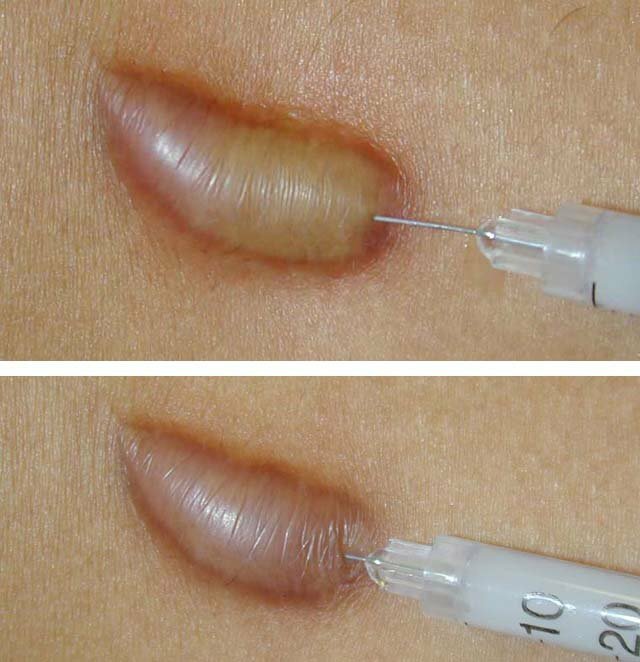
The use of immunomodulators is the newest method of treatment.Interferon, injected into the seam line, is able to prevent the recurrence of the keloid scar after its excision.
Enzyme preparations help to reduce keloid by destroying its structural components - hyaluronic acid and collagen.These drugs include: "Lidase" and "Ronidasa."More modern preparation is "Longidasa", which is a combination of hyaluronidase with polyoxidonium( immunomodulator).The most effective method of introducing enzyme preparations is phonophoresis or ultraphonophoresis.
Another preparation with a pronounced anti-inflammatory effect, used for the treatment of post-burn hypertrophic and keloid scars for many years: "Kontratubeks".
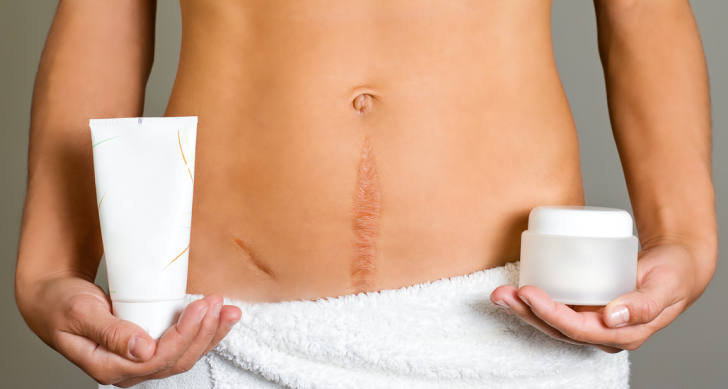
The preparation "Fermenkol" contributes to the depletion of collagen in the rumen.
The effect of the use of medicines is noted 3-4 weeks after the start of their use.The optimal effect develops after 2-3 courses of phonophoresis or after 10-15 sessions of application.
Surgical procedures for the removal of keloid scars
 Surgical removal of keloid scars is the least effective way of treating them - relapses are noted in 50-100% of cases.The optimal option - a combination of excision with the imposition of occlusive( pressing) bandages.A tight bandage is applied a few days after the operation.
Surgical removal of keloid scars is the least effective way of treating them - relapses are noted in 50-100% of cases.The optimal option - a combination of excision with the imposition of occlusive( pressing) bandages.A tight bandage is applied a few days after the operation.
Cryosurgery is a short-term freezing of the rumen with liquid nitrogen.In some cases 2-3 freezing cycles for 20-30 seconds are sufficient to achieve the desired effect.
Laser therapy - the impact of pulsed laser radiation on scar tissue causes a decrease due to the reduction of collagen.Another effect of laser exposure is cauterization of the scar.
Surgical techniques are most effective when combined with postoperative administration of corticosteroids - in this case, the frequency of relapse is minimal.
Physical Methods
The application of tight silicone dressings to the scar leads to a reduction in approximately 20-25% of the cases.However, a long-term, 24-hour wearing of these dressings is required - within 6-8 months, which gives a pronounced discomfort.
Radiation therapy
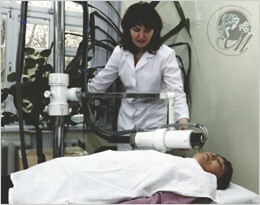 Influence on the surface of a keloid scar by ionizing radiation( beech rays) causes the destruction of collagen fibers, which leads to a decrease in the volume of scar tissue.Assign up to 6 irradiation sessions with an interval of 1.5-2 months.Contraindicated this method of treatment in diseases of the kidney, in the presence of unhealed wounds and skin diseases.
Influence on the surface of a keloid scar by ionizing radiation( beech rays) causes the destruction of collagen fibers, which leads to a decrease in the volume of scar tissue.Assign up to 6 irradiation sessions with an interval of 1.5-2 months.Contraindicated this method of treatment in diseases of the kidney, in the presence of unhealed wounds and skin diseases.
Cosmetic procedures
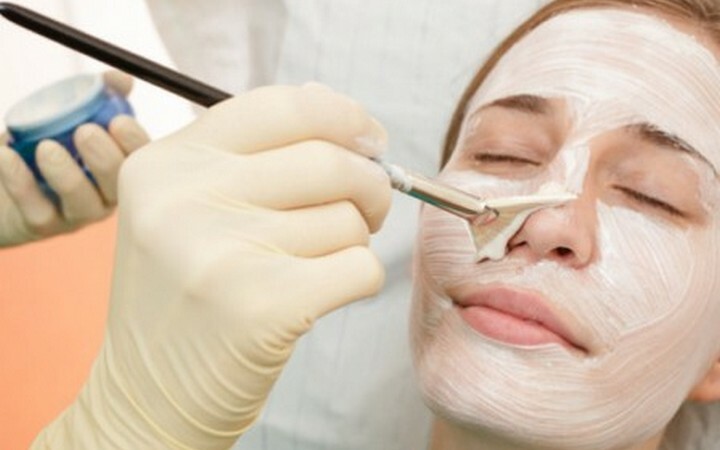 Note: dermabrasion, peelings, mesotherapy are effective only in the treatment of hypertrophic scars - when exposed to aggressive techniques like these, the keloid scar is at high risk of recurrence and even more keloid proliferation.
Note: dermabrasion, peelings, mesotherapy are effective only in the treatment of hypertrophic scars - when exposed to aggressive techniques like these, the keloid scar is at high risk of recurrence and even more keloid proliferation.
It should be noted that hypertrophic scars should only be subjected to grinding after they have completely stabilized.Signs of complete stabilization of such scars are the acquisition of a normal color( skin color or a little paler) and a slight decrease in volume.
Chemical peels with hypertrophic scars are carried out in two stages.At the first stage, a silicone cream is used, which protects the skin from drying out and helps stabilize the scar.The second stage is directly peeling itself.
Which method of treatment of keloid scars is the most effective
Undoubtedly, the most effective method is the use of injections of hormonal drugs.Scars of small and medium size can be almost completely removed with ointments with corticosteroids.For large scars, it is recommended to use a combination of several methods - excision of the rumen with the subsequent use of occlusive dressings and the introduction of corticosteroids with immunomodulators.
However, no method gives a complete guarantee of no relapse of the keloid.In the treatment of this pathology a strict individual approach should be used, in which all the parameters of the scar are taken into account: its location, time of existence, propensity to recur.
The most effective techniques for removing keloid scars are described in detail in this video review:
Gudkov Roman, resuscitator


